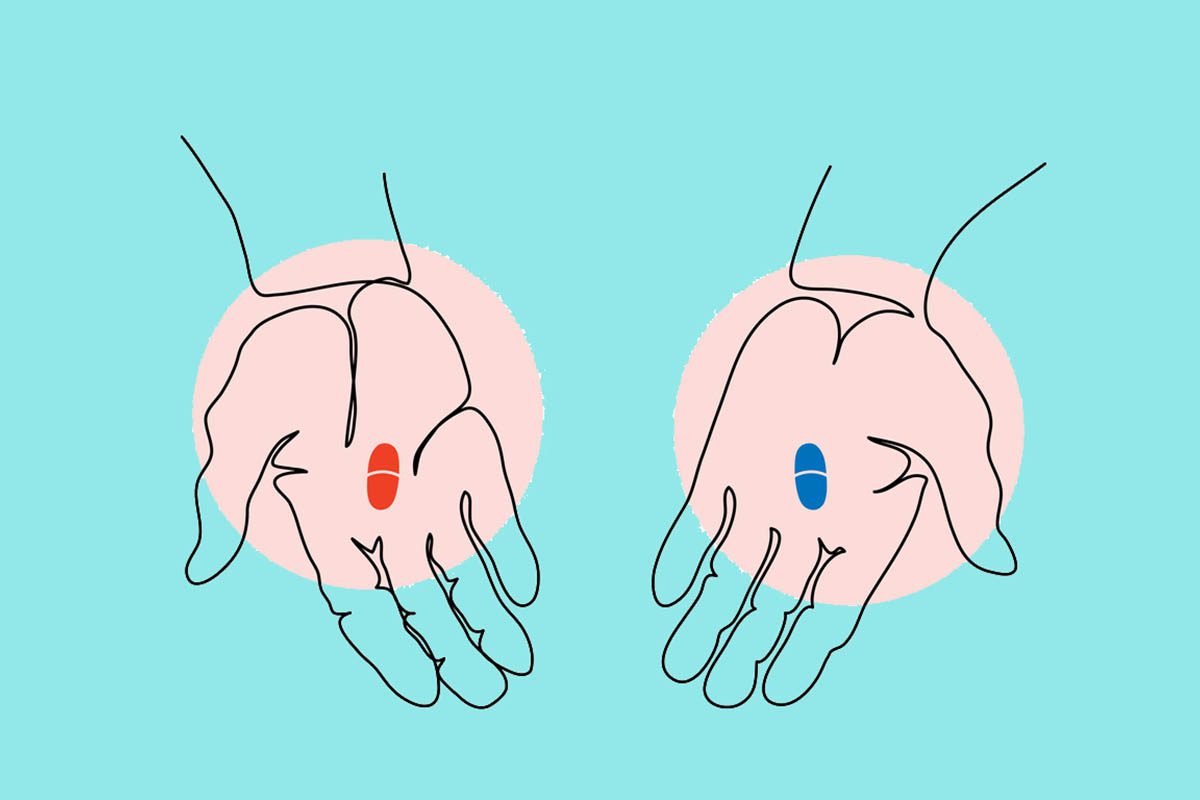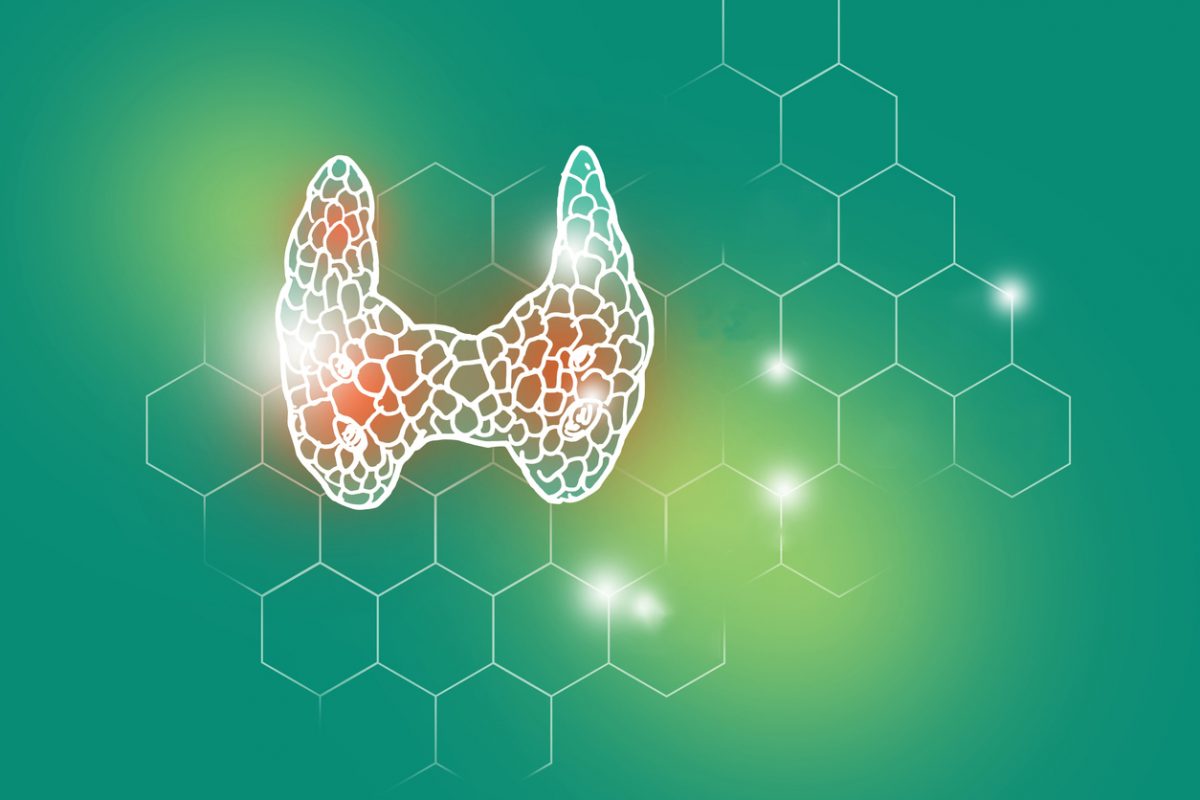Rediscovering Adverse Anticholinergic Effects
A generation ago, psychiatrists were very familiar with anticholinergic adverse effects due to the common use of tricyclic antidepressants and typical antipsychotics with concomitant anticholinergic drugs to manage extrapyramidal symptoms. However, since the introduction of atypical antipsychotics and selective serotonin reuptake inhibitors (SSRIs), prescribers generally appear to have become less mindful of the anticholinergic neuropsychiatric effects that can occur in vulnerable patient populations, such as the elderly.1 In conjunction with this development, the proportion of older patients seen by most psychiatrists has risen.2 The convergence of these trends is highlighted in a recent study by Modi et al,1 which uncovered that nearly half of nursing home patients prescribed cholinesterase inhibitors for dementia were also taking medications with anticholinergic activity.
We will briefly review the mechanisms and neuropsychiatric manifestations of drugs with anticholinergic properties and discuss safety monitoring to limit anticholinergic load in susceptible populations.
Mechanism of Action and Adverse Effects of Anticholinergic Drugs
The classic manifestations of anticholinergic toxicity comprise a variety of peripheral and central nervous system effects, including tachycardia (one of the initial signs of anticholinergic toxicity), flushing (“red as a beet”), anhidrosis (“dry as a bone”), mydriasis (“blind as a bat”), urinary retention (“full as a flask”), agitation, delirium (“mad as a hatter”), hyperthermia (“hot as a hare”), decreased bowel sounds, and constipation.3
With the development of less anticholinergic psychotropics, the acute signs and symptoms of anticholinergic toxicity are less likely to be encountered clinically. Rather, adverse neuropsychiatric effects tend to manifest in susceptible populations, such as the elderly or those with mental illness, as they may already have cognitive deficits or reduced cognitive reserve secondary to comorbid conditions (eg, cerebrovascular disease, dementia, traumatic brain injury). Many commonly prescribed medications from a variety of classes, including antihistamines, antidepressants, and antipsychotics, have either intended or unintended anticholinergic properties that can contribute to neuropsychiatric symptoms (Table 1).4 Moreover, conditions for which anticholinergic medications tend to be prescribed, such as urinary incontinence or chronic obstructive pulmonary disease, typically occur in later life.
Cholinergic neurotransmission occurs through the binding of the neurotransmitter acetylcholine to either muscarinic or nicotinic receptors. The term anticholinergic, however, traditionally refers only to the effects of muscarinic receptor antagonism. Due to the prominent influence of cholinergic neurotransmission throughout the peripheral and central nervous systems, the diverse number of adverse effects attributable to anticholinergics is not surprising. The parasympathetic division of the autonomic nervous system is exclusively cholinergic. Muscarinic receptors are present on effector cells of the parasympathetic nervous system and sweat glands innervated by the sympathetic nervous system. Adverse peripheral effects result from excess muscarinic antagonism at the target organ. Centrally, cholinergic neurons exist predominantly in the basal forebrain and the mesopontine area within the rostral midbrain.5 Cholinergic neurons project to most cortical and subcortical structures and are influential in arousal, sleep, cognition, movement, motivation, metabolism, and the modulation of other neurotransmitters.5,6
A number of studies over the past 2 decades have consistently linked anticholinergic activity with poorer outcomes in the elderly and those with major psychiatric disorders.
Age-related peripheral and central pharmacokinetic and pharmacodynamic effects on neurotransmission may contribute to drug sensitivity in the elderly.7 Moreover, cholinergic system degeneration, a process known for its role in the pathophysiology of Alzheimer’s disease, may also accompany aging. Prescribing medications with anticholinergic effects to older individuals places them at a greater risk of developing cognitive impairment and possibly dementia.8 Higher serum anticholinergic activity is associated with lower Mini-Mental State Examination scores9 and cognitive deficits in older adults.10,11 This risk may be reduced by discontinuing medications with anticholinergic effects.8 Drugs that antagonize muscarinic receptors are also known to contribute to fatigue, weakness, cognitive and psychomotor slowing, and falls.12-14
The memory and executive dysfunction in Alzheimer’s disease and other dementias, in part secondary to cholinergic neuronal degeneration, makes these individuals especially sensitive to anticholinergic effects.15-17 Higher anticholinergic activity is associated with worse cognitive impairment in persons with Alzheimer’s disease18 and places them at increased risk of delirium.19 The use of drugs with anticholinergic properties in patients with Alzheimer’s disease may counteract any benefit derived from cholinesterase inhibitors and was shown to contribute to worse clinical outcomes.20 Higher serum anticholinergic activity was also associated with a greater loss of independence in a group of nursing home residents.21
Anticholinergic activity also appears to exacerbate the cognitive deficits that manifest in major mental illnesses, such as depression and schizophrenia.9,22-29 In persons with schizophrenia, higher anticholinergic load has deleterious effects on attention, learning, and memory.22-24,26,27,29 There is evidence to suggest that cognitive deficits persist regardless of improvement in either mood or psychosis if patients are prescribed antidepressants or antipsychotics with antimuscarinic effects.25,28
Monitoring Anticholinergic Load and Minimizing Anticholinergic Effects
The serum anticholinergic radioreceptor assay is designed to quantify the cumulative antimuscarinic activity of all substances present in an individual’s serum, including medications, drug metabolites, and possibly endogenous substances.4 The anticholinergic compounds compete with quinuclidinyl benzilate, a nonspecific muscarinic receptor antagonist, for binding to prepared muscarinic membranes derived from rat forebrains. The serum anticholinergic assay has helped quantify the antimuscarinic activity of commonly used drugs (Table 1),4 and it has demonstrated a clear relationship between anticholinergic load and cognitive impairment.9,18,30 The assay, however, is not available clinically due to methodological issues and interlaboratory variation. Serum anticholinergic activity has not been found to be associated with toxicity, and thus the assay cannot reliably predict delirium. Moreover, as a measure of peripheral anticholinergic activity, it does not provide direct quantification of CNS effects. Thus, newer anticholinergic agents that have limited-to-no access to the CNS may be identified as having high anticholinergic activity.
The physician must rely on clinical instruments or source materials to identify medications that may contribute to a patient’s total anticholinergic burden (eg, Table 1).4 One such measure is the Anticholinergic Drug Scale (ADS), which rates drugs on the basis of their degree of anticholinergic activity.31 The total score is derived from adding the anticholinergic activity of all medications taken by the patient. Although reliable, the ADS accounts for only a fraction of the individual variance in levels of serum anticholinergic activity.32 Despite this limitation, the ADS is useful as a tool for identifying drugs that may add to the cumulative effects of drugs with mild-to-modest anticholinergic activity. In taking a complete medication history, it is important to remember that many over-the-counter drugs have potent anticholinergic effects. Common examples include sleep aids and cold and flu remedies (eg, diphenhydramine), antinauseants/antiemetics (eg, dimenhydrinate), H2 antihistamines (eg, ranitidine), gastrointestinal agents (eg, atropine, dicyclomine, l-hyoscyamine), and urinary incontinence agents (eg, tolterodine, oxybutynin).
There are a number of antipsychotics (ie, high-potency typical antipsychotics and most atypical antipsychotics, except olanzapine and clozapine)33,34 and antidepressants (ie, SSRIs, except paroxetine) available to the prescriber that have minimal-to-no anticholinergic activity.4 Yet, one must still be cautious in selecting an agent with mild-to-modest anticholinergic activity if it is prescribed in conjunction with other drugs with antimuscarinic properties. Similarly, there are newer antihistaminergic (eg, second-generation H1 antagonists) and anticholinergic agents that have minimal CNS effects in comparison with older agents.35-37 For example, the bladder antispasmodic agent trospium has limited ability to cross the blood-brain barrier, and solifenacin and darifenacin are selective antagonists of M3 receptors, which are found primarily in the bladder and gut.
Conclusion
Prescribers need to be vigilant for adverse anticholinergic effects, particularly in the elderly. The classic symptoms of anticholinergic toxicity, if present, may manifest in only an attenuated form. More likely is that this population will exhibit cognitive deficits and neuropsychiatric symptoms secondary to the cumulative effects of medications with modest anticholinergic activity. A laboratory test to quantify anticholinergic load on a case-by-case basis, such as the serum anticholinergic assay, is not widely available. The ADS and tables that list drugs with known anticholinergic properties (eg, Table 1) can guide clinical decision making to reduce anticholinergic burden. Many newer agents from a variety of medication classes are available that have little-to-no central anticholinergic activity. By choosing an antihistamine, bladder antispasmodic agent, antipsychotic, or antidepressant with limited anticholinergic activity, the clinician will prevent or reduce untoward neuropsychiatric effects in already cognitively susceptible populations.
Author affiliations: Geriatric Mental Health Program (both authors) and Multimodal Imaging Group (Dr Gerretsen), Centre for Addiction and Mental Health; and Department of Psychiatry, University of Toronto (both authors), Toronto, Ontario, Canada. Potential conflicts of interest: Dr Gerretsen has no conflicts of interest to declare. Within the past 2 years, Dr Pollock has been a member of the advisory board of Lundbeck Canada (final meeting was May 2009) and was a faculty member of the Lundbeck International Neuroscience Foundation (LINF) (last meeting was April 2010). Funding/support: None reported. Corresponding author: Bruce G. Pollock, MD, PhD, University of Toronto, Faculty of Medicine, Centre for Addiction and Mental Health, 33 Russell St, T-109, Toronto, ON M5S 2S1 ([email protected]).
References
1. Modi A, Weiner M, Craig BA, et al. J Am Geriatr Soc. 2009;57(7):1238-1244. PubMed doi:10.1111/j.1532-5415.2009.02258.x
2. Gallo JJ, Lebowitz BD. Psychiatr Serv. 1999;50(9):1158-1166. PubMed
3. Goodman LS, Gilman A, Brunton LL, et al. Goodman & Gilman’s The Pharmacological Basis of Therapeutics. 11th ed. New York, NY: McGraw-Hill; 2006.
4. Chew ML, Mulsant BH, Pollock BG, et al. J Am Geriatr Soc. 2008;56(7):1333-1341. PubMed doi:10.1111/j.1532-5415.2008.01737.x
5. Mesulam MM. Prog Brain Res. 2004;145:67-78. PubMed doi:10.1016/S0079-6123(03)45004-8
6. Barak S. Behav Brain Res. 2009;204(2):335-351. PubMed doi:10.1016/j.bbr.2009.04.006
7. Leon C, Gerretsen P, Uchida H, et al. Curr Psychiatry Rep. 2010;12(1):28-33. PubMed doi:10.1007/s11920-009-0080-3
8. Carrière I, Fourrier-Reglat A, Dartigues JF, et al. Arch Intern Med. 2009;169(14):1317-1324. PubMed doi:10.1001/archinternmed.2009.229
9. Mulsant BH, Pollock BG, Kirshner M, et al. Arch Gen Psychiatry. 2003;60(2):198-203. PubMed doi:10.1001/archpsyc.60.2.198
10. Nebes RD, Pollock BG, Mulsant BH, et al. Psychopharmacol Bull. 1997;33(4):715-720. PubMed
11. Cancelli I, Gigli GL, Piani A, et al. J Clin Psychopharmacol. 2008;28(6):654-659. PubMed doi:10.1097/JCP.0b013e31818ce849
12. Aizenberg D, Sigler M, Weizman A, et al. Int Psychogeriatr. 2002;14(3):307-310. PubMed doi:10.1017/S1041610202008505
13. Nebes RD, Pollock BG, Halligan EM, et al. J Gerontol A Biol Sci Med Sci. 2007;62(1):83-85. PubMed
14. Nebes RD, Pollock BG, Halligan EM, et al. Am J Geriatr Psychiatry. 2010; PubMed
15. Fibiger HC. Trends Neurosci. 1991;14(6):220-223. PubMed doi:10.1016/0166-2236(91)90117-D
16. Mufson EJ, Ginsberg SD, Ikonomovic MD, et al. J Chem Neuroanat. 2003;26(4):233-242. PubMed doi:10.1016/S0891-0618(03)00068-1
17. Whitehouse PJ, Price DL, Struble RG, et al. Science. 1982;215(4537):1237-1239. PubMed doi:10.1126/science.7058341
18. Chew ML, Mulsant BH, Pollock BG. Am J Geriatr Psychiatry. 2005;13(6):535-538. PubMed
19. Cancelli I, Valentinis L, Merlino G, et al. Clin Pharmacol Ther. 2008;84(1):63-68. PubMed doi:10.1038/sj.clpt.6100435
20. Lu CJ, Tune LE. Am J Geriatr Psychiatry. 2003;11(4):458-461. PubMed
21. Rovner BW, David A, Lucas-Blaustein MJ, et al. Am J Psychiatry. 1988;145(1):107-109. PubMed
22. Perlick D, Stastny P, Katz I, et al. Am J Psychiatry. 1986;143(2):230-232. PubMed
23. Tune LE, Strauss ME, Lew MF, et al. Am J Psychiatry. 1982;139(11):1460-1462. PubMed
24. Tracy JI, Monaco C, Giovannetti T, et al. Biol Psychol. 2001;56(1):1-22. PubMed doi:10.1016/S0301-0511(00)00083-1
25. Nebes RD, Pollock BG, Houck PR, et al. J Psychiatr Res. 2003;37(2):99-108. PubMed doi:10.1016/S0022-3956(02)00085-7
26. Minzenberg MJ, Poole JH, Benton C, et al. Am J Psychiatry. 2004;161(1):116-124. PubMed doi:10.1176/appi.ajp.161.1.116
27. McGurk SR, Green MF, Wirshing WC, et al. Schizophr Res. 2004;68(2-3):225-233. PubMed doi:10.1016/S0920-9964(03)00123-3
28. Spohn HE, Strauss ME. J Abnorm Psychol. 1989;98(4):367-380. PubMed doi:10.1037/0021-843X.98.4.367
29. Strauss ME, Reynolds KS, Jayaram G, et al. Schizophr Res. 1990;3(2):127-129. PubMed doi:10.1016/0920-9964(90)90045-9
30. Vinogradov S, Fisher M, Warm H, et al. Am J Psychiatry. 2009;166(9):1055-1062. PubMed doi:10.1176/appi.ajp.2009.09010017
31. Carnahan RM, Lund BC, Perry PJ, et al. J Clin Pharmacol. 2006;46(12):1481-1486. PubMed doi:10.1177/0091270006292126
32. Carnahan RM, Lund BC, Perry PJ, et al. Psychopharmacol Bull. 2002;36(4):14-19. PubMed
33. Schwartz JT, Brotman AW. Drugs. 1992;44(6):981-992. PubMed doi:10.2165/00003495-199244060-00007
34. Richelson E. J Clin Psychiatry. 2010;71(9):1243-1244. PubMed doi:10.4088/JCP.10ac06470yel
35. Welch MJ, Meltzer EO, Simons FE. Clin Allergy Immunol. 2002;17:337-388. PubMed
36. Staskin D, Kay G, Tannenbaum C, et al. J Am Geriatr Soc. 2010;58(8):1618-1619. PubMed doi:10.1111/j.1532-5415.2010.02988.x
37. Abrams P, Andersson KE, Buccafusco JJ, et al. Br J Pharmacol. 2006;148(5):565-578. PubMed doi:10.1038/sj.bjp.0706780
J Clin Psychiatry 2011;72(6):869-870 (doi:10.4088/JCP.11ac07093)
© Copyright 2011 Physicians Postgraduate Press, Inc.
ASCP Corner offerings are not peer reviewed by the Journal but are peer reviewed by the ASCP. The information contained herein represents the opinion of the author.
Visit the Society Web site at www.ascpp.org





